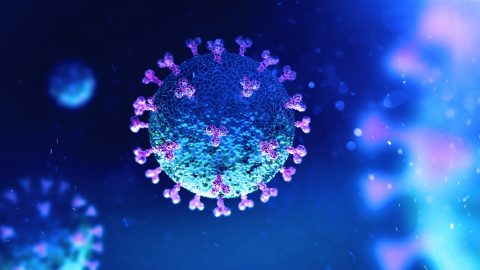Thoughts from the 2006 International Society of Sports Nutrition Conference
Each year I try to attend various scientific conferences that apply to my interests, research, and business. As anyone can see who follows my writings, this conference was right up my alley. The International Society of Sports Nutrition (ISSN) is a relatively new organization* and this was their third conference to date. Yours truly was invited to have a poster session. My poster covered supplements used by Special Operations soldiers, such as Navy SEALs and others. My poster is available on request BTW.
This year the conference was held at the Stardust hotel June 15th – 17th in Las Vegas. I have recommended that anyone interested in the topic of sports nutrition, lay person or scientist, should join the ISSN. The theme for this conference was “Sports nutrition strategies to optimize performance, recovery, and health.” Cool title, but did it live up to its name? Yes it did.
For those of you who are unfamiliar with how such conferences are set up, I will give a brief overview before we get to the good stuff.
Conferences generally have several days of one hour seminars (called “sessions”) where researchers present their findings. Next there is often a big room filled with what are called “poster sessions.” Poster sessions are, as the name implies, a large poster that sums up some research project. People will then come by and have a one on one conversation with the author of the poster and ask questions or make comments. Some conferences can have a room with hundreds of posters. It’s a great way to view a large amount of research in a short amount of time. Finally, most conferences will have an exhibit hall where the sponsors of the conference and other companies have booths where people can check out what they are about. This conference had supplement companies, manufacturers, etc. in the exhibit hall. That’s the basic breakdown of most scientific conferences. The ‘meat’ of a conference is the seminars and the reason for attending such shows. It’s the place to get the very latest research on a topic of interest. What follows is a synopsis of some of the research presented in the sessions and posters I thought would be of interest to readers.
Sessions:
“Effects of protein and carbohydrate on anabolic responses to resistance training” by Dr. Paul Cribb
This session Dr. Cribb’s outlined the research he has been conducting looking at different combinations of nutrients and timing and their effects on lean body mass (LBM) and strength. He went through several studies he has done that looked at carbs, creatine, and whey, alone and in different combinations, and their effects on LBM and or strength. His conclusion was that the combination of all three (whey, carbs, and creatine) was the most effective combo for increases in LBM and strength and that there appeared to be a true synergism between these nutrients. I don’t think that comes as a big surprise to most people “in the know” about such things, but it’s good to see that it’s being confirmed in controlled settings. He also confirmed the timing issue. His lab found that a mixture of these nutrients taken immediately pre- and post-workout was more effective at increasing strength and LBM then the same concoction taken at other times of the day, showing that not only does it matter what you take, but when you take it!
“L- Carnitine in sports: Roles in exercise and recovery” By Dr. William Kraemer
Dr. Kraemer outlined a possible new novel pathway by which carnitine may improve performance in athletes. Although carnitine has not proved to be a particularly useful supplement for increasing performance directly, Dr Kraemer’s contention is that it may improve recovery which would indirectly help athletes. According to him, carnitine can reduce free radical mediated damage and reduce hypoxia (low oxygen states in tissues) which can help avoid the “destructive chemical events following exercise.” In theory, that should lead to improved recovery which could lead to improved performance in the long run. More research is clearly needed but it’s interesting, and potentially useful, information for athletes.
“The Lactate Shuttle” By Dr. Brooks
As most people know, lactic acid has been considered nothing more then a waste product that causes muscles to fatigue and results in the ‘burn” people experience when exercising. Recently however, there has been a resurgence of interest in lactic acid with researchers. Dr. Brooks outlined a long list of functions of lactic acid/lactate plays in the human body and its role in athletic performance. New research done by Dr. Brooks’ lab and other locals conclude that lactic acid is both an energy source and functions as a signaling source for other pathways in the human body. No longer viewed as a simple waste product, lactate is now considered as an essential component of intermediary metabolism.
Those are just a few of the sessions I sat through. Many others looked at topics such as amino acid metabolism, various supplements and their effects on performance and other outcomes, training seminars covering different theories on training to maximize hypertrophy, various creatine studies, and a whole bunch more I don’t have the space to cover here.
Poster Sessions of interest:
The poster sessions were quite varied and interesting. Probably the most interesting (besides mine!) were a handful of studies on what might be the next big thing in sports nutrition supplements, which is called Beta-alanine. Beta-alanine is an amino acid that converts – with histidine – into carnosine. Carnosine is found throughout the body and acts as a buffer agent, an antioxidant, and performs other roles in the body. Why does a buffer agent help with exercise you ask? When you workout with high enough intensity your blood PH will lower (become more acidic) which interferes with the muscle’s ability to contract, which is part of the reason you can’t do another rep. So, carnosine, being able to keep your blood less acidic due to its pH buffering ability, can allow you to do get an extra few reps before you punk out, which allows you to do more work. That’s the super simple explanation of course. It’s a tad more complicated then that!
So far, studies that look at performance look very promising. In theory, Beta-alanine should be most effective for endurance athletes but from talking at length with the researchers (that’s why poster sessions are so great!) it appears that beta-alanine should be helpful to strength athletes also. Because there were so many beta-alanine posters of interest, instead of attempting to go through all of them, I have posted them below for your perusal. The bottom line here is that beta-alanine in sufficient doses looks like a very promising supplement for endurance athletes and perhaps, strength athletes. I suspect it will be a popular supp if the price charged is not too high.
Harris RC1, Ponte J1, Hill CA1, Sale C1, Jones GA1, Kim HJ2), Wise JA3 Effect of 14 and 28 days ß-Alanine (Carnosyn™) supplementation on isometric endurance of the knee extensors. 1University of Chichester, Chichester, UK; 2Korea National Sport University, Seoul, Korea; 3Natural Alternatives International, San Marcos, USA
Carnosine (Carn) occurs in high concentrations in muscle and is highly effective in buffering H+. Carn is synthesized in situ from ß-alanine (ß-Ala) and histidine. Synthesis appears to be limited by the availability of ß-Ala from ex-muscle synthesis and meat ingestion. We have reported ~60 and ~80% increases in muscle Carn with 4 and 10wk supplementation with ß-Ala. Evidence from our laboratory indicates that uptake of _-ala into muscle is further enhanced by co-administration with simple sugars. AIM To investigate, by means of two independently run, double blind studies, the effect of supplementing (6.4 g/d) ß-Ala for 28d and 14d [the last co-supplemented with carbohydrate (CHO)], upon isometric endurance of the knee extensors at 45-50%MVC. 45-50%MVC coincides with the peak in intramuscular lactate accumulation and pH decrease. METHODS Study a): [principal investigator JP] comprised 14 male subjects aged 22.9±(SD) 5.9 yrs and mass 80.2±10.5kg, randomly assigned to receive either [800 mg] x 8/d x 28d of ß-Ala (Carnosyn™, NAI, San Marcos, Ca) (n=8) or a matching placebo capsules containing maltodextrin (n=6). Study b): [principal investigator RCH] comprised 20 male subjects aged 25.3±7.5yrs and mass 78.0±10.2kg assigned to receive either [1600mg] x 4/d x 14d of ß-Ala (n=8) or a matching placebo (n=12). Each test and control treatment was ingested with 45-65g CHO comprising mostly glucose. In both studies isometric exercise endurance of the knee extensors, and impulse (kN/s) generated, were measured pre and post supplementation. RESULTS Study a): MVC’s of test and control subjects (mean±SE) were 754±54 and 720±91N, respectively. Exercise endurance times, pre and post supplementation, were treatment: 75.5±6.8 and 83.7±7.8s, and control: 74.6±6.5 and 72.6±7.8s. The 8.2±3.3s gain (+11.1%) in the treatment group was significant (P<0.05) compared to the change in the control. Impulse changed by +3.37±1.24 (+12.6%) and -0.59±0.68 (-2.4%) kN/s in the treatment and control groups, respectively (P<0.05). Study b): MVC’s of test and placebo subjects were 685±38 and 653±51N, respectively. Endurance times, pre and post supplementation, were treatment: 70.0±5.3 and 78.0±3.3s, and control: 74.5±4.1 and 73.8±3.5s. The 8.0±3.2s gain (+14.4%) in the treatment group was significant (P<0.05) compared to the change in the control. Impulse changed by +2.67±1.10 (14.5%) and -0.14±0.45 (0.0%) kN/s in the treatment and control groups respectively (P<0.05). CONCLUSION From the results of two independently run studies, 28d supplementation with ß-Ala, or 14d supplementation with each dose combined with CHO ingestion, resulted in similar (11.1% and 14.4%) and significant increases in isometric endurance. The results are consistent with pH limitation of exercise endurance at 45-50%MVC
#12
Kendrick I1, Harris RC1, Kim CK2, Kim HJ2, Viet DH3, Thanh LQ3, Toai, BT3, Wise JA4 The effect of ß-alanine (Carnosyn™) supplementation on muscle carnosine synthesis during 4 weeks using a one-leg training model. 1University of Chichester, UK; 2Korea National Sport University, Korea; 3University of Physical Education and Sport II, Vietnam; 4Natural Alternatives Intl, San Marcos, USA
Carnosine (Carn) is highly effective in buffering H+ over the physiological pH range and is probably the only such active compound in muscle where the concentration can be changed by diet (or training). Synthesis occurs in muscle from ß-alanine (ß-ala) and histidine and can be increased by ß-Ala supplementation. Muscle Carn is increased by chronic training (Parkhouse et al 1985; Tallon et al 2005). The effect of short-term training is less clear. Suzuki et al (2004) reported a doubling in the concentration with 8wk sprint-training (3 d/wk) in contrast to Mannion et al (1994) where no effect of 16wk isokinetic training (3 d/wk) was found. AIM To investigate the effect of ß-Ala supplementation on muscle Carn synthesis during 4wk using a one-leg training model. METHOD Study a): 14 male Vietnamese PE students aged 20-26yr, of normal body-mass and height participated. None were vegetarians. Their normal dietary intake of meat and fish was estimated to contribute 200-600 mg/d ß-Ala (in dipeptide form). Subjects were matched according to body-mass and initial strength, and randomised to receive [800 mg] x 8/d x 4wk of ß-Ala (Carnosyn™, NAI, San Marcos) or matching placebo capsules of maltodextrin. Subjects trained isokinetically using one designated leg (T) 3/wk during wks 1-2 and 4/wk during wks 3-4. Each training session consisted of 10×10 maximum 90o isokinetic extension and flexion contractions @ 180o/s using a KinKom isokinetic dynamometer, with 1 min rest between bouts. The collateral leg served as a control and was not trained (NT). Biopsies of the v. lateralis were taken at 0, 2 and 4wk for analysis of Carn and taurine. Study b): a further 7 students of similar age, height and mass undertook a similar study but trained for 1 h/d, 5 d/wk for 4 wk undertaking 60 min of self-paced work with one leg (T). The collateral leg again was not trained (NT). Biopsies were taken at 0 and 4wks. 4 subjects were supplemented with ß-Ala; 3 with placebo. RESULTS Study a): In those subjects supplemented with ß-Ala, Carn increased 34.3 ±SE 13.5% (P<0.05) and 52.2±10.7% (P<0.01) in T at 2 and 4wk, and, 16.7±6.4% (P<0.05) and 28.3±11.2% (P<0.05) in NT. In the absence of ß-Ala supplementation there was no change in Carn in either T or NT. Tau did not change in any condition. Study b): The same trend occurred as in study a) with Carn increased with ß-Ala supplementation at the end of 4wk but no change even with training in the absence of supplementation. CONCLUSION Carn was unchanged by 4wk training alone but was increased when ß-Ala supplementation was included. The change in Carn with training + supplementation appeared > than with supplementation alone.
#13
Kendrick I1, Kim CK2, Viet DH3, Harris RC1, Kim HJ2,Thanh LQ3, Toai, BT3, Wise JA4 The effect of ß-alanine (Carnosyn™) supplementation on muscle carnosine synthesis during a 10 week program of strength training. 1University of Chichester, Chichester, UK; 2Korea National Sport University, Seoul, Korea; 3University of Physical Education and Sport II, Hochiminh City, Vietnam; 4Natural Alternatives Intl, San Marcos, USA
Carnosine (Carn) occurs in high concentrations in muscle and is highly effective in buffering H+ over the physiological pH range. Carn is probably the only such active compound where the concentration can be changed by diet (or training). Synthesis of Carn occurs in muscle from ß-alanine (ß-ala) and histidine, of which the former is limiting. We have shown that supplementation with ß-ala for 4 and 10wk increases muscle Carn by ~60% and ~80% with significant increases in anaerobic exercise capacity (Harris et al 2006; Hill et al 2006). Muscle Carn is increased by chronic training (Parkhouse et al 1985; Tallon et al 2005). The effect of short-term training is less clear. Suzuki et al (2004) reported a doubling in the concentration with 8wk sprint-training (3 d/wk) in contrast to Mannion et al (1994) where no effect of 16wk isokinetic training (3 d/wk) was found. AIM To investigate the effect of ß-Ala supplementation on muscle Carn synthesis during a 10wk program of strength training. METHOD 26 male Vietnamese physical education students aged 20-26 yr, of normal body mass and height were recruited to the study. None were vegetarians and all continued their normal dietary intake of meat and fish contributing an estimated 200-600 mg/d ß-Ala (in dipeptide form). Subjects were matched in pairs according to body mass and initial strength, and evenly randomised to receive [800 mg] x 8/d x 10wk of ß-Ala (Carnosyn™, NAI, San Marcos) or matching placebo capsules of maltodextrin. Subjects undertook 4 weight-training sessions per wk, 2 being lower body-dominant and 2 upper body-dominant, using a protocol based upon that of Hoffman & Stout (2004). The goal was to induce maximal strength and muscle mass gains in the 10wk. Biopsies of the v. lateralis were taken at 0 and 10wk for analysis of Carn and taurine. RESULTS Muscle Carn was unchanged with training alone (pre 29.2 ±SE 2.6 vs post 27.3±2.8 mmol/kg dm; P>0.05) but increased when ß-Ala supplementation was included (23.6±1.4 vs 36.0±2.23 mmol/kg dm; P<0.001). Tau did not change (training alone: 32.3±1.6 vs 36.1±3.3 mmol/kg dm; P>0.05), (training + supplementation: 31.1±3.7 vs 34.0±2.4 mmol/kg dm; P>0.05). CONCLUSION Carn was unchanged by 10wk training alone but was increased with ß-Ala supplementation, and to a similar extent seen in other studies undertaken without training. From the literature, chronically trained athletes, e.g. body-builders appear to have increased muscle Carn levels. In these the increased content may be a long-term effect of training or the result of a higher than normal ß-Ala content (including that in dipeptide form) present in the diet
#14
Kim HJ1, Kim CK1, Lee YW1, Harris RC2, Sale C2, Harris DB2, Wise JA3 The effect of a supplement containing ß-alanine on muscle carnosine synthesis and exercise capacity, during 12 wk combined endurance and weight training. 1Korea National Sport University, Seoul, Korea; 2University of Chichester, Chichester, UK; 3Natural Alternatives Intl, San Marcos, USA
Carnosine (Carn) occurs in high concentrations in muscle with a content ratio between types I and II muscle fibres of 1 to 1.5-2. With a pKa of 6.83 for the imidazole ring of the histidine residue, Carn is highly effective in buffering H+ over the physiological pH range, and probably the only such active compound where the concentration can be changed by diet (and training). Synthesis of Carn occurs in muscle from ß-alanine (ß-ala) and histidine, of which the availability of the former appears limiting. We have recently shown that supplementation with ß-ala for 4 and 10wk increases muscle Carn by ~60% and ~80%, respectively, resulting in significant increases in anaerobic exercise capacity (Harris et al, 2006; Hill et al, 2006). Muscle Carn is increased by chronic training (Parkhouse et al 1985; Tallon et al 2005). The effect of short-term training is less clear. Suzuki et al (2004) reported a doubling in the Carn concentration with 8 wk sprint-training (3 d/wk) in contrast to Mannion et al (1994) where no effect of 16 wk isokinetic training (3 d/wk) was found. Aim: To investigate the effect of a commercial supplement (Phosphagen Elite™, EAS, Golden) containing, per serving, 1.6g ß-Ala Carnosyn™, NAI, San Marcos), 5.25g creatine and 1g taurine (Tau) on muscle Carn synthesis during training. Tau has the potential to interfere with the uptake into muscle of ß-ala, and visa versa. Methods: Cyclists (20±(SD)1 yr; 78±8 kg ) received either Phosphagen Elite (n=6) or Control (Phosphagen Elite less ß-Ala) (n=6), 3 x d (i.e. 4.8 g/d ß-Ala in the test group) during 12wk of combined endurance (5 h/d, 6 d/wk) and weight training (3 d/wk). Biopsies of the v. lateralis were taken at 0 and 12wk for fibre morphology and analysis of Carn and Tau. Subjects undertook an incremental cycle test to determine VO2 max, VO2 at ventilatory threshold (VT) and work time to exhaustion (WTE), and, total work done (TWD) during an isokinetic test of the knee extensors at 240o/s. Results: Type II cross sectional was increased with training in both groups, P<0.05. Carn was unchanged with training (23.9 vs 25.7 mmol/kg dm; P>0.05) but increased with ß-Ala supplementation (20.5 vs 30.0 mmol/kg dm; P<0.01). Tau did not change. VO2 at VT, WTE and TWD with isokinetic flexion were increased with ß-Ala supplementation. TWD with isokinetic extension was unchanged. Conclusion: Carn was unchanged by training alone but was increased by ß-Ala supplementation (and to a similar extent seen in other ß-Ala supplementation studies undertaken without training). The increase in WTE and TWD are most probably the result of the increase in buffering capacity resulting from the increase in Carn.
*Info on the ISSN can be found at www.theISSN.org
Will Brink is the owner of the Brinkzone Blog. Will has over 30 years experience as a respected author, columnist and consultant, to the supplement, fitness, bodybuilding, and weight loss industry and has been extensively published. Will graduated from Harvard University with a concentration in the natural sciences, and is a consultant to major supplement, dairy, and pharmaceutical companies.
His often ground breaking articles can be found in publications such as Lets Live, Muscle Media 2000, MuscleMag International, The Life Extension Magazine, Muscle n Fitness, Inside Karate, Exercise For Men Only, Body International, Power, Oxygen, Penthouse, Women’s World and The Townsend Letter For Doctors.
He’s also been published in peer reviewed journals.
Will is the author of the popular e-books, both accompanied by private members forum access , Bodybuilding Revealed & Fat Loss Revealed.
You can also buy Will’s other books on Amazon, Apple iBook, and Barnes and Noble.








